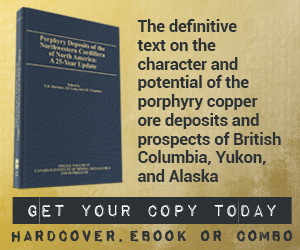Library Magazine Articles CIM Input Into NI 43-101 Amendments
CIM Input Into NI 43-101 Amendments
Deborah McCombe & John Postle - Aug 2009
On January 20, 2009, the Canadian Securities Administrators (CSA) launched a project to revise and update National Instrument (NI) 43-101 Standards of Disclosure for Mineral Projects.
The British Columbia Securities Commission will lead the project with participation from other CSA jurisdictions. The project responds to a number of industry and regulatory concerns that have developed since NI 43-101 was implemented in 2001.
As part of this project, several provincial securities commissions, including those of British Columbia, Ontario and Quebec, have held focus groups to seek input into potential revisions to the Instrument.
In addition to general recommendations on amendments to NI 43-101, the focus groups also raised some issues specific to the CIM Definition Standards of December 11, 2005 and industry best practices.
The CIM Standing Committee on Resource and Reserve definitions is seeking input from the mining industry on several of these comments.
Reasonable prospects for economic extraction
Several comments pertained to the meaning of the “reasonable prospects for economic extraction” clause in the definition of a Mineral Resource. This clause appears in all the major Resource Definitions systems with little guidance.
Not defined in NI 43-101, this term relies on the Qualified Person’s judgment and experience for its determination. Several Qualified Persons have offered interpretations of the clause. However, at this point, there is a wide range of views and little consensus on the matter.
It has been suggested that the CIM Definition Standards should provide additional guidance to assist Qualified Persons in dealing with this issue.
Inferred mineral resources
Addition of Inferred Resources to other categories of mineral resources. Another issue discussed was the CIM Definitions Standards’ prohibition against adding Inferred Mineral Resources to other categories of mineral resources.
Currently under NI 43-101, Indicated Mineral Resources and Measured Mineral Resources can be totalled if they are also disclosed separately. However, because of the low confidence level of Inferred Resources, they may not be included in the total resource.
This exclusion comes from early reviews of Canada’s Mineral Resource and Mineral Reserve definitions by CIM in the 1990s. Back then, there was a third class of reserves known as Possible Reserves (the equivalent of Inferred Resource on a McKelvey box concept).
Considered to be occasionally abused in National Policy 2A (the pre-2001 securities policy) reports, this category was eliminated from the mineral reserve definitions category. This was in keeping with international experience in Mineral Resource and Mineral Reserve definitions at that time.
Currently, the Australasian JORC Code allows the addition of the 3 categories of resources. The U.S. Securities Exchange Commission’s Industry Guide 7 does not allow the reporting of resource unless it is required by law in another country (for example, Canada). Thus, internationally, there is still no consensus.
Broader use of Inferred Resources in economic studies. NI 43-101 prohibits the use of Inferred Mineral Resources in economic analyses, except in preliminary assessments (scoping studies) prepared before a prefeasibility study. It is suggested that a scoping study using Inferred Resources should be permitted in very specific circumstances at a more advanced stage of a project.
International Mineral Resource and Mineral Reserve codes
Many other Mineral Resource and Mineral Reserve codes developed internationally, such as the Australasian JORC Code, simply state that “caution should be used if Inferred Resources are considered in technical and economic studies.”
Some codes provide more guidance on the use of Inferred Resources in economic studies.
The Pan-European Reporting Code (PERC 2008) mandates clear disclosure if Inferred Resources are used in economic analyses. The South African SAMREC 2007 Code states that if Inferred Resources are included in economic studies, a comparison of the results with and without the Inferred Mineral Resources must be shown.
The above highlights some of the issues that have arisen from discussions on NI 43-101 amendments and CIM Definition Standards. Clearly, more work needs to be done to arrive at a workable consensus. The CIM Reserve Definition Committee solicits your input on these and any other issues that you may have. Please submit your comments to jvavrek@cim.org and john.postle@scottwilson.com.
About the authors
Deborah McCombe, executive vice-president of Scott Wilson Roscoe Postle Associates, is a consulting geologist who is strongly involved in Canadian disclosure standards for the mining industry.
John Postle is a consulting mining engineer with Scott Wilson Mining Group, providing services to international financial institutions, corporations, utilities and law firms.

.png)
